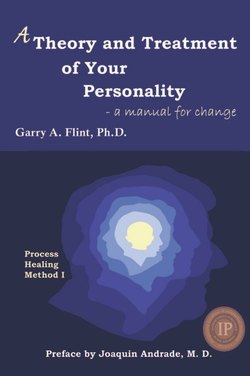Читать книгу A Theory and Treatment of Your Personality - Garry Flint - Страница 55
На сайте Литреса книга снята с продажи.
ОглавлениеWhen the trauma begins, the novel, intensely painful sensory experience and the absence of relevant memory in Memory III triggers a massive response of adaptive behaviors (1). This massive response is independent of the Main Personality when Basic Neurostructure creates behavior in a survival emergency. Because of this intense behavior in the Active Experience, the Main Personality is rapidly pushed out of the Active Experience to a dormant state (2). The Main Personality (MP) is shown outside, beneath the Active Experience. During the trauma, from the start of the trauma at “Trauma Starts” to the end of the trauma at “Trauma Stops,” behavior is managed by the executive function and is remembered. A new memory structure is formed at the start of the trauma when the brain mobilizes and becomes an amnesic trauma part (TP). Amnesic parts includes the executive function and any of the behavior usually seen in the Main Personality. The memories reflect the age of the person. At the end of the trauma, when the pain has decreased in intensity (3), the Main Personality rushes back into the Active Experience and the trauma part is pushed out to be dormant in memory (4). It is interesting that unless trauma parts become active in the Active Experience, dormant trauma parts do not change. The trauma part is an amnesic part.
The amnesic part is created when the Main Personality rapidly moves out of the Active Experience and rapidly returns to the Active Experience. This causes amnesia between the Main Personality and the trauma part because, when it is created, few or no neural connections are made between the Main Personality and the trauma part. This is how amnesic memories and parts are formed.
Figure 3-10 shows how an amnesic part is represented in the Main Personality. When the Main Personality tries to remember the trauma, it cannot access or remember the trauma experience because of the amnesia — for example , the absence of neural connections. The absence of neural connections to the trauma parts is the reason it is more difficult to discover and treat amnesic parts as opposed to dissociative parts. With dissociative parts, a dissociative process alters the neural response so it will not be conscious to the Main Personality.
Now, amnesic parts are normal and present in most people. Amnesic parts can be created before birth, during birth or later. For example, severe colic, a severe earache as an infant, abuse, automobile or industrial accidents, and so forth, can create amnesic parts. The result is that many people who have these parts do not recognize the muscle movements, or visual or auditory intrusions, as behavior caused by parts. Other people might have co-conscious parts or parts that run the body. It can get complex (see Appendix II).
There are other ways amnesic parts can be formed. Often, amnesic parts are formed before birth, resulting in prebirth parts. Prebirth parts can be formed in utero by a medical crisis in the mother, an accident, physical abuse, rape, a loud noise, high blood alcohol, and so forth (see Figure 3-11). There can be more than one prebirth part. It is interesting that prebirth parts usually work to communicate information between the subconscious and the Main Personality. Because prebirth trauma causes the prebirth part, the information given to the Main Personality can be inaccurate because of distortions caused by filters or inaccurate memories created during a trauma. This may result in distorted insights or premises about reality that lead to a mental disorder or personality issue.
When a life-threatening event occurs in the first four years of life, damage to specialized regions of the brain have been shown to stop, retard, or alter emotional development. Such early trauma causes the brain to become more sensitive and responsive to fear and pain. The result is that the brain will more easily respond to trauma and mobilize to create amnesic parts. When this happens, the intensity of pain required to mobilize the brain is less than normal. This means a survivor who has had some early life trauma experiences that created amnesic parts will more likely have many amnesic parts. New amnesic parts can be created even when the traumas are less intense than the original trauma (see Figure 3-12). This lowered threshold, which allows for easy creation of amnesic parts, is found in schizophrenia and other severe mental disorders.
